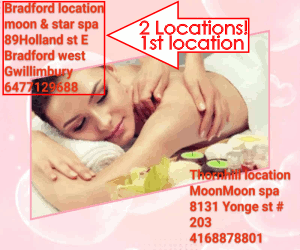Marie
You said you are problem-free now.
I am not quite clear as to whether you had the surgery or not.
Anyway, here is a link you might want to look at: www.magiclaser.com
They use low power laser therapy to cure an impressive array of degenerative disorders such as symptomatic herniated disk and joint problems.
An economical home laser therapy device is the TerraQuant, which has a distributor in the UK. Although this device is Class 1M and should not present an eye hazard, I recommend using the protective goggles supplied with the device just to be on the safe side. It seems you simply direct the laser beam onto the painful area of your back with the hand-held unit. I am now waiting for delivery of the device. A local laser therapy clinic told me that for back problems, treatment for 10 minutes twice a week would be about right. They said that although individual response varies, the problem often completely resolves without surgery in 6 months. There are "in vitro" (lab dish) studies which show that the laser stimulates cartilage growth. In addition, the laser clinic with the "magiclaser" website above states that post-MRI confirm disk regeneration. Some hospitals here use this laser therapy for first-time hernia sufferers, but not for long-standing disk problems (such as mine) - when they recommend surgery. Nevertheless, I plan to start this therapy in conjunction with "Syn-Flex" liquid glucosamine, chrondroitin, cod liver oil and other herbal agents immediately. As another resource, there is also the "Andean Medicine Center" in London which has an armoury of 6 or 7 rainforest herbs specifically for herniated disk. Yet another resource is the MedX computerized feedback isometric back-strengthening machine in Harley Street which aims to strengthen the musculature around the disk, and thereby allow the disk to heal without interference. These approaches aim to reconstruct the failing disk, joint and surrounding tissue rather than surgery which aims to solve the problem by partially or completely removing it (at high risk), and therefore, these constructive approaches get my unequivocal support, first-timer or long-timer.
You said you are problem-free now.
I am not quite clear as to whether you had the surgery or not.
Anyway, here is a link you might want to look at: www.magiclaser.com
They use low power laser therapy to cure an impressive array of degenerative disorders such as symptomatic herniated disk and joint problems.
An economical home laser therapy device is the TerraQuant, which has a distributor in the UK. Although this device is Class 1M and should not present an eye hazard, I recommend using the protective goggles supplied with the device just to be on the safe side. It seems you simply direct the laser beam onto the painful area of your back with the hand-held unit. I am now waiting for delivery of the device. A local laser therapy clinic told me that for back problems, treatment for 10 minutes twice a week would be about right. They said that although individual response varies, the problem often completely resolves without surgery in 6 months. There are "in vitro" (lab dish) studies which show that the laser stimulates cartilage growth. In addition, the laser clinic with the "magiclaser" website above states that post-MRI confirm disk regeneration. Some hospitals here use this laser therapy for first-time hernia sufferers, but not for long-standing disk problems (such as mine) - when they recommend surgery. Nevertheless, I plan to start this therapy in conjunction with "Syn-Flex" liquid glucosamine, chrondroitin, cod liver oil and other herbal agents immediately. As another resource, there is also the "Andean Medicine Center" in London which has an armoury of 6 or 7 rainforest herbs specifically for herniated disk. Yet another resource is the MedX computerized feedback isometric back-strengthening machine in Harley Street which aims to strengthen the musculature around the disk, and thereby allow the disk to heal without interference. These approaches aim to reconstruct the failing disk, joint and surrounding tissue rather than surgery which aims to solve the problem by partially or completely removing it (at high risk), and therefore, these constructive approaches get my unequivocal support, first-timer or long-timer.




























































































